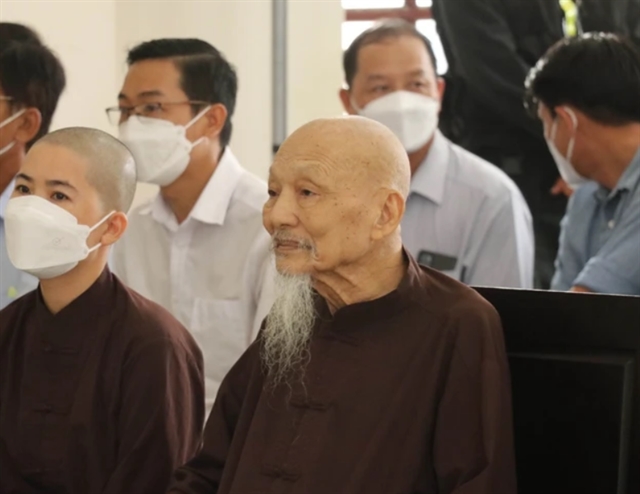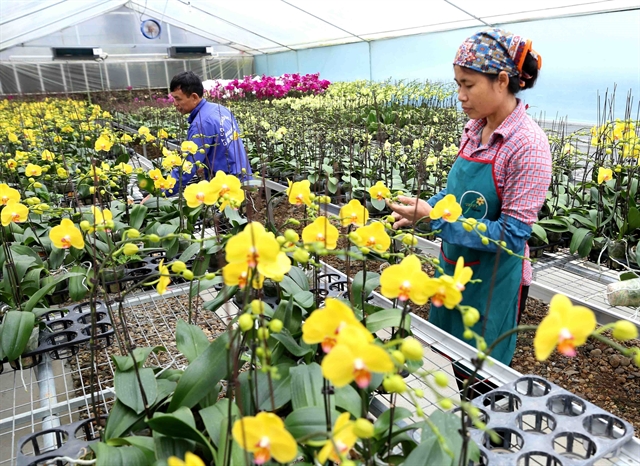 Society
Society

Up to 84.2 per cent of the communes in the capital city of Hà Nội have met the standards for new-style rural areas as of April this year.

|
| Đan Hoài flower farm in Hà Nội's Phùng township in Đan Phượng District, which is developed as part of the district's agricultural development planning built following the criteria of a new-style rural area. VNA/VNS Photo Vũ Sinh |
HÀ NỘI — Up to 84.2 per cent of the communes in the capital city of Hà Nội have met the standards for new-style rural areas as of April this year.
The city has met this high mark two years ahead of schedule after 325 of its 386 communes achieved all the necessary criteria.
According to Nguyễn Văn Chi, deputy head of the city’s steering office for the new-style rural area building programme, Hà Nội is a leading locality in the effort to build the new-style areas, and the programme has brought new life to the city's outskirts and helped improve the lives of locals.
Following the land accumulation and consolidation, farmers have shifted to the cultivation of high-value crops and orchards. Attention has also been paid to developing traditional craft villages across the city.
Reports from the municipal Department of Agriculture and Rural Development show that after 10 years of implementing the Party Committee’s programme on diversifying agriculture, building new-style rural areas and bettering local farmers’ lives, the added value of the agricultural sector has increased by 2.5 per cent per year on average, with the total value of agro-forestry-fishery production rising 3.6 per cent.
Per capita income rose to VNĐ46.5 million (US$1,998) in 2018 from VNĐ33 million in 2015, and the figure is expected to increase to VNĐ49 million by the end of this year. The rate of poor households was brought down to 1.81 per cent by the end of 2018 from 3.65 per cent in 2016.
Infrastructure development in rural areas has progressed well, even surpassing set targets. 378 communes have met transportation standards, up five from the end of 2018. 384 communes have satisfied irrigation system standards, 386 met electricity standards, 342 have met school requirements and 373 have met standards for cultural facilities.
In addition, convenience stores and mini-markets have sprung up on the edge of the capital city.
According to the municipal Department of Planning and Investment, Hà Nội splashed out more than VNĐ76.45 trillion for local agricultural and rural development from 2011 to June 2019. State budget funds worth nearly VNĐ26 trillion were allocated for 18 districts and communes to transform into new-style rural areas.
The national programme is targeting having communes complete at least 15 out of the 19 criteria on average. No commune should have completed less than five.
Under the programme, roads, electrical infrastructure, clean water systems, schools and medical stations will be developed.
Hà Nội authorities recently announced the city would spend VNĐ265 billion implementing the local One Commune-One Product (OCOP) programme for the 2019-20 period to accelerate the building of new-style rural areas.
According to the plan, 100 per cent of OCOP programme managers at commune, district and municipal level public agencies, as well as at organisations, businesses and co-operatives that have registered for the programme, will have to undergo training to improve their capacity.
Though it has implemented the initiative later than some other localities, Hà Nội is aiming to upgrade between 800 and 1,000 products to meet OCOP standards, of which 500 are set to be ranked at the municipal level and 100 others at the national level.
The capital city has set a goal of developing at least two eco-craft village models.
Initially, Hà Nội’s OCOP programme will focus on a number of commodity group, including food, beverages, herbs, fabrics and apparel, souvenirs and home decorations, as well as agricultural tourism. Participating organisations will receive assistance with investing in machines and equipment for production, design, registering their brands, accessing capital, hiring experts and distributing goods. — VNS









